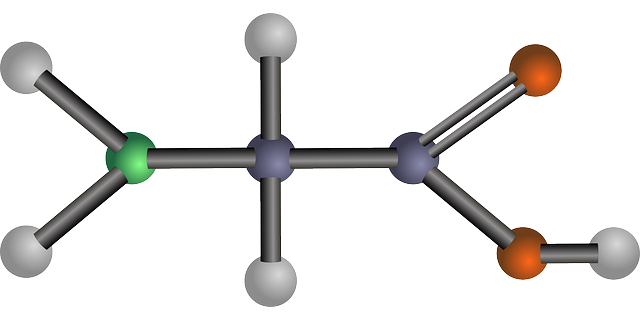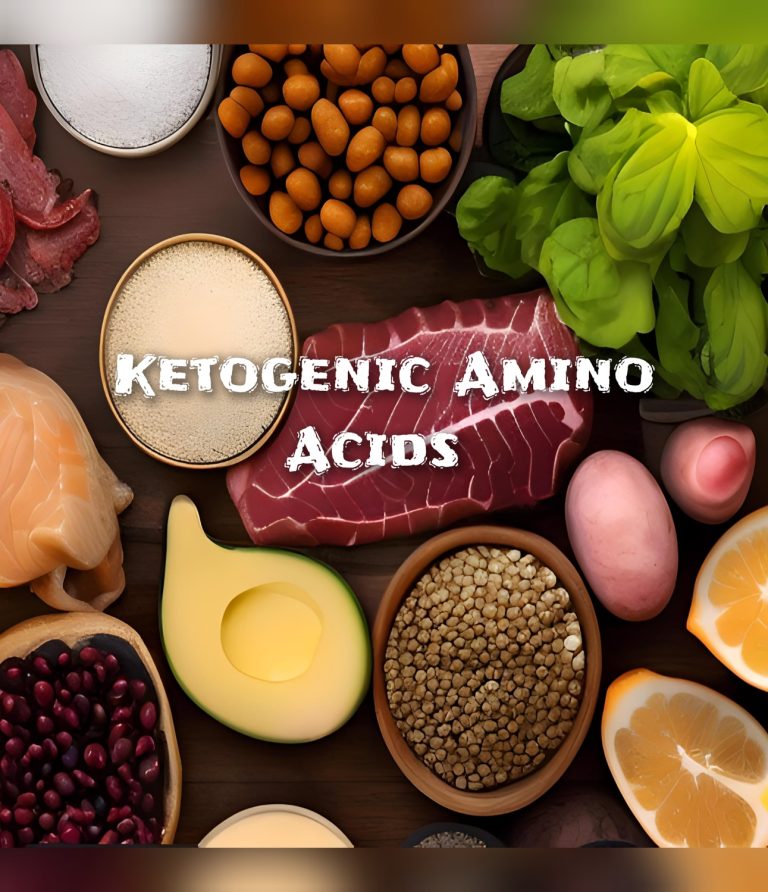You’ve probably heard of the ketogenic diet. It’s all the rage these days, and for good reason. The Keto diet is a great way to lose weight and improve your health. Believe it or not, the Keto diet is based on ketogenic amino acids.
Amino acids are the building blocks of protein and play an important role in our lives. There are three types of amino acids: essential amino acids, nonessential amino acids and conditional. Essential amino acids cannot be made by the body and must be obtained from food sources. Non-essential amino acids can be made by the body and conditional amino acids are only necessary in certain situations.
Amino acids can be classified into three groups depending on how your body metabolizes them. Glucogenic amino acids, Ketogenic amino acids and glucogenic-ketogenic amino acids
In this article, we’ll discuss the definition of ketogenic amino acids, the examples of Ketogenic amino acids, connection between glucogenic amino acids and Ketogenic amino acids. We’ll also take a look at some of the benefits of incorporating Ketogenic amino acids into your daily routine and possible side effects of high intake of ketogenic amino acids.
Essential Amino Acids
Essential amino acids are amino acids that the body cannot synthesize on its own and must be obtained through the diet. There are nine essential amino acids: valine, histidine, tryptophan, leucine, phenylalanine , methionine, isoleucine, threonine and lysine.
Non-Essential Amino Acids
Non-essential amino acids are amino acids that the human body can synthesize, or produce, on its own. Examples of non-essential amino acids include Serine, Proline, Glutamine, Glutamate, Alanine, and Asparagine.
Conditional Amino Acids

Except under certain circumstances such as illness and stress, conditional amino acids are generally not considered essential. These amino acids, which include arginine, cysteine, glutamine, tyrosine, glycine, ornithine, proline, and serine, may become essential during these special circumstances.
What Are Ketogenic Amino Acids And What’s Their Importance in Fuel Production?

Ketogenic amino acids are a type of amino acids that are produced through a process called Ketogenesis. This is the production of ketone bodies by breaking down fatty acids. The ketone bodies can then be used as an alternative fuel source. When the body is restricted from glucose or sugar due to fasting or ketogenic diets, it must find another source of energy. This is where ketogenesis comes in – using the fatty acids and amino acids in the body to create energy in the form of water-soluble ketone bodies.
The primary ketogenic amino acids are leucine, lysine, and they can be converted into intermediate compounds called acetoacetyl-CoA and acetyl-CoA through a process called β-oxidation. The intermediates can be further converted into ketone bodies such as beta-hydroxybutyrate, acetoacetate and acetone. The carbon atoms in the ketone bodies produce carbon dioxide upon degradation in the citric acid cycle making them unable to produce glucose.
Ketogenic Amino Acids versus Glucogenic Amino Acids. What’s the Difference?
Glucogenic amino acids are those that can be converted into glucose through a process called gluconeogenesis. Gluconeogenesis is the process by which the body generates new glucose from non-carbohydrate sources, such as proteins and fatty acids. This process occurs primarily in the liver and kidneys
During gluconeogenesis, the carbon skeletons can be converted into one of the six intermediates or glucose precursors of glycolysis in the gluconeogenic pathway. The various glucose precursors produced are pyruvate, fumarate, succinyl-CoA, alpha-ketoglutarate, and oxaloacetate. These intermediates are produced through a series of chemical reactions that convert non-carbohydrate sources into glucose.
Glucogenic amino acids include alanine, arginine, proline, methionine, asparagine, glutamine, cysteine, aspartic acid, serine, and valine.
Our bodies can process ketogenic amino acids through the ketogenic metabolic pathways. This is when the amino acid is first introduced into the body and then it’s broken down into smaller, water-soluble ketone bodies. These ketone bodies are easier to be transported throughout the body for energy purposes. It is possible to use ketogenic amino acids to convert pyruvate into acetyl-CoA through the process of pyruvate dehydrogenase.
In both glucogenic and ketogenic amino acids, the amino group plays a critical role in the metabolism of these molecules and the production of energy for the body. However, the body primarily relies on glucose as its primary energy source, and so glucogenic amino acids are more important for maintaining blood sugar levels and providing energy to the body. For people on ketogenic diets, their carbohydrate intake is low, thus, they’ll be forced to use ketogenic amino acids for energy production.
Glucogenic-ketogenic amino acids are amino acids that can be converted into both glucose and ketone bodies. These amino acids are converted into glucose through a process called gluconeogenesis, which also occurs in the liver.
Exclusively Ketogenic Amino Acids That You Should Include In Your Next Meal

Lysine and leucine are the only exclusively amino acids. They’re broken down into ketone body precursors, which are acetyl-CoA and acetoacetate. This means that they don’t produce any glucogenic byproducts, which makes them great for people on a keto diet.
Leucine
Leucine is one of the branched-chain amino acids. BCAAs are essential amino acids, meaning they cannot be synthesized by the body and must be obtained through the diet.
For people on a ketogenic diet, this exclusively ketogenic amino acid may have several potential benefits. One of the main benefits of leucine is its ability to stimulate protein synthesis, which is important for maintaining and building muscle mass. Leucine may also help to preserve muscle mass during periods of weight loss, which is a common goal of the ketosis.
Leucine may also have a positive effect on blood sugar control. Some research suggests that leucine may help to improve insulin sensitivity and reduce the risk of developing insulin resistance, a condition in which the body becomes less sensitive to the effects of insulin. This can be particularly important for people with diabetes or prediabetes, as insulin resistance is a major risk factor for the development of type 2 diabetes.
The Recommended Daily Intake (RDA) of leucine varies depending on age, sex, and physical activity level. Generally, adult men and women need about 55-65 mg of leucine per kilogram of body weight per day. For a sedentary adult, this translates to about 35-40 mg of leucine per pound of body weight per day. For example, a sedentary adult woman who weighs 140 pounds (63.5 kg) would need about 2.3-2.6 grams of leucine per day, while a sedentary adult man who weighs 180 pounds (81.6 kg) would need about 3.0-3.4 grams of leucine per day.
There are several food sources of leucine that can be incorporated into a ketogenic diet, including:
- Meat: Meat, particularly red meat, is a rich source of leucine. Some examples include beef, lamb, and pork.
- Poultry: Poultry, such as chicken and turkey, is also a good source of leucine.
- Fish: Fish, particularly fatty fish like salmon and tuna, is a good source of leucine.
- Eggs: Eggs are a rich source of leucine, as well as other essential amino acids.
- Dairy: Dairy products, such as Greek yogurt, Swiss cheese, are good sources of leucine. Other options that can be included are butter, cheddar cheese, feta cheese and Parmesan.
- Nuts and seeds: Nuts and seeds, such as almonds, peanuts, and chia seeds, are good sources of leucine.
Lysine
Lysine is an essential amino acid that is important for a number of functions in the body. It is involved in the production of collagen, a protein that is found in skin, bones, and connective tissue, and it is also involved in the production of carnitine, which is a molecule that plays a critical role in the metabolism of fats in the body. It is synthesized from the amino acid lysine, and it helps transport long-chain fatty acids into the mitochondria, where they can be broken down and used for energy.
Lysine is also important for the absorption of calcium, immune function, and the production of hormones, enzymes, and antibodies. Deficiency in lysine can lead to anemia, loss of appetite, fatigue, and impaired growth in children. It is important to consume enough lysine to meet the body’s needs for optimal health.
The Recommended Daily Intake (RDA) of lysine varies depending on age, gender, and lifestyle factors. For adult men, the recommended daily intake is 38-56 mg/kg body weight. For adult women, the recommended daily intake is 29-42 mg/kg body weight. For children and adolescents, the recommended daily intake is 31-42 mg/kg body weight. Pregnant and lactating women have higher needs for lysine and should aim for slightly higher intake levels..
There are several food sources of lysine that can be incorporated into a ketogenic diet, including:
- Meat: Meat, especially red meat, is a good source of lysine. Lean cuts of beef, lamb, and pork can all be included in a ketogenic diet.
- Poultry: Poultry, such as chicken and turkey, is also a good source of lysine.
- Fish: Fish, particularly salmon, sardines, and cod, is a good source of lysine.
- Dairy: Dairy products, such as Swiss cheese, cottage cheese and Greek yogurt, contain moderate amounts of lysine. Other options that can be included are butter, feta cheese, Parmesan and cheddar cheese.
- Nuts and seeds: Nuts and seeds, such as almonds, sunflower seeds, and pumpkin seeds, are good sources of lysine.
Make sure you include these ketogenic amino acids in your diet to get the most out of your Keto journey!
Glucogenic-Ketogenic Amino Acids
There are several amino acids that have both ketogenic and glucogenic properties, meaning that they can be metabolized by the body in different ways depending on the body’s needs.
Some examples of amino acids that have both ketogenic and glucogenic properties include:
Phenylalanine
Phenylalanine is an amino acid that has both ketogenic and glucogenic properties. This means that it can be metabolized by the body in different ways depending on the body’s needs.
One way that phenylalanine can be metabolized is through a process called phenylalanine hydroxylase, which converts it into tyrosine. Tyrosine is a glucogenic amino acid, which means that it can be converted into glucose through a process called gluconeogenesis. Gluconeogenesis is the process by which the body generates new glucose from non-carbohydrate sources, such as proteins and fats.
Another way that phenylalanine can be metabolized is through a process called phenylpyruvate decarboxylase, which converts it into phenylpyruvate. Phenylpyruvate is a ketogenic compound, which means that it can be converted into molecules called ketone bodies, which can be used as an alternative source of energy for the body.
It’s Important to note that the body’s ability to convert phenylalanine into either tyrosine or phenylpyruvate depends on a variety of factors, including the body’s energy needs, the availability of other nutrients, and the overall metabolic state of the individual.
The Adequate Intake (AI) for phenylalanine for adults is set at 5 mg per kilogram of body weight per day. This value is based on the average intake of phenylalanine in healthy populations and is considered to be sufficient to meet the needs of most individuals.
Threonine
Threonine is an amino acid that can be metabolized by the body in different ways depending on the body’s needs. It can be converted into either a ketogenic compound called alpha-ketobutyrate or a glucogenic amino acid called glycine.
The body’s ability to convert threonine into either of these compounds depends on a variety of factors, including the body’s energy needs, the availability of other nutrients, and the overall metabolic state of the individual.
Threonine is an important amino acid that plays a key role in the synthesis of collagen and elastin, as well as the synthesis of other proteins and enzymes. It is also involved in the metabolism of fat and the maintenance of the Immune system.
In the diet, threonine can be found in a variety of protein-rich foods, such as meat, dairy products, eggs, and legumes. It is an essential amino acid, meaning that it cannot be synthesized by the body and must be obtained through the diet. It can also be taken as a dietary supplement.
The Recommended Daily Intake of Threonine is between 9-14 mg per pound of body weight, or 20-32 mg per kg of body weight. This varies depending on age, gender, and physical activity level
Tryptophan
Tryptophan is an essential amino acid that plays several important roles in the body. It is involved in the synthesis of proteins and certain neurotransmitters, such as serotonin and melatonin.
Tryptophan is classified as both a ketogenic and a glucogenic amino acid because it can be metabolized by the body in different ways depending on the body’s needs. Under certain conditions, tryptophan can be converted into kynurenine, which is a glucogenic amino acid. Kynurenine can then be further converted into other compounds that can be used to generate energy for the body.
On the other hand, tryptophan can also be converted into kynurenic acid, which is a ketogenic compound. Kynurenic acid can be used by the body as an alternative source of energy, particularly when glucose is not readily available.
Overall, tryptophan is an important amino acid that plays a number of important roles in the body, and its ability to be converted into either glucose or ketone bodies makes it an important player in the body’s energy metabolism.
The Recommended Daily Intake of Tryptophan is about 0.3 to 0.5 grams per day for adults. This amount can vary depending on factors such as age, gender, and overall diet.
Isoleucine
Isoleucine is an amino acid that has both ketogenic and glucogenic properties, which means that it can be metabolized by the body in different ways depending on the body’s needs.
Isoleucine can be converted into acetoacetyl-CoA, which is a ketogenic compound, or into propionyl-CoA, which is a glucogenic compound. The body’s ability to convert isoleucine into either glucose or ketone bodies depends on a variety of factors, including the body’s energy needs, the availability of other nutrients, and the overall metabolic state of the individual.
Isoleucine is an essential amino acid, which means that it must be obtained from the diet. It can also be taken as a dietary supplement. It is found in a variety of protein-rich foods, including meat, dairy products, nuts, and beans. It is also commonly found in protein supplements, such as protein powders and bars.
Isoleucine plays a number of important roles in the body, including helping to maintain muscle tissue, regulating blood sugar levels, and supporting immune function. It is also involved in the production of hemoglobin, which is the protein in red blood cells that carries oxygen to the body’s tissues.
The Recommended Daily Intake of Isoleucine is 12 mg per kg of body weight for adults. However, this may vary depending on factors such as age, sex, and physical activity level
So, which one is better? That really depends on your goals. If you’re trying to build muscle, then you want to focus on glucogenic amino acids. But if you’re trying to lose weight, then ketogenic amino acids may be a better option.
Benefits of Incorporating Ketogenic Amino Acids Into Your Daily Routine
You may be wondering what the benefits of ketogenic amino acids are. Here are a few potential benefits:
Improved weight loss

There are several ways in which ketogenic amino acids may contribute to weight loss. Some possible mechanisms include:
Increased fat oxidation: Ketogenic amino acids, such as leucine, may help to increase the body’s ability to burn fat for energy. This can help to reduce the amount of fat stored in the body and contribute to weight loss.
Decreased appetite: Some research suggests that increasing the intake of ketogenic amino acids may help to reduce appetite and food intake, which can contribute to weight loss.
Increased muscle mass
Ketogenic amino acids, such as leucine, may help to increase muscle mass by stimulating protein synthesis in the body. Protein synthesis is the process by which the body builds new proteins, which are essential for the growth, maintenance, and repair of tissues, including muscle tissue.
Leucine, in particular, has been shown to have a strong effect on protein synthesis. It is one of the three branched-chain amino acids (BCAAs), which are a group of essential amino acids that are particularly important for muscle growth and maintenance. Leucine activates a signaling pathway in the body called the mTOR pathway, which plays a key role in regulating protein synthesis. By activating this pathway, leucine can help to stimulate protein synthesis, which can lead to increased muscle mass over time.
It’s important to note that increasing the intake of ketogenic amino acids alone may not be sufficient to promote muscle growth. To build muscle, it’s also important to engage in regular strength training exercises and consume an adequate amount of protein from a varied diet.
Improved blood sugar control
Ketogenic amino acids, such as leucine, may help to improve blood sugar control by increasing the production of ketone bodies in the body. Ketone bodies are molecules that can be used as an alternative source of energy for the body, particularly when glucose is not readily available.
When the body is in a state of ketosis, it relies more heavily on the breakdown of fat for energy, rather than glucose. This can help to lower blood sugar levels and improve overall blood sugar control.
Some research suggests that increasing the intake of ketogenic amino acids may be helpful for individuals with diabetes or at risk of developing diabetes. As with any dietary changes, it’s always a good idea to consult with a healthcare professional before making any significant changes to your diet.
Improved Antioxidant Properties
There is some evidence to suggest that ketogenic amino acids may have antioxidant properties and may be able to help decrease oxidative stress in the body.
Oxidative stress is a condition that occurs when the body’s antioxidant defense systems are overwhelmed by the production of harmful reactive oxygen species (ROS). These ROS can cause damage to cells and tissues, leading to a variety of health problems.
Some research suggests that increasing the intake of ketogenic amino acids, such as leucine, may help to reduce oxidative stress by increasing the production of antioxidants and by decreasing the production of ROS.
It’s Important to note that more research is needed to fully understand the potential antioxidant effects of ketogenic amino acids and to determine the optimal dosage and duration of supplementation for reducing oxidative stress. As with any dietary changes, it’s always a good idea to consult with a healthcare professional before making any significant changes to your diet.
Improved brain function
Some studies have shown that ketone bodies can help improve cognitive function. This is believed to be due to the fact that ketone bodies can cross the blood-brain barrier and be used as an alternative fuel source for the brain cells.
Ketogenic amino acids, such as leucine, may help to improve cognitive function through many mechanisms.
One possible mechanism is by increasing the production of ketone bodies, which can be used by the brain as an alternative source of energy. The brain typically relies on glucose as its primary energy source, but it can also use ketone bodies as an alternative fuel when glucose is not readily available.
Another possible mechanism is by increasing the synthesis of certain neurotransmitters, such as dopamine and serotonin, which are involved in mood and cognitive function. Some research suggests that increasing the intake of ketogenic amino acids may help to improve mood and cognitive function by boosting the production of these neurotransmitters.
It’s important to note that more research is needed to fully understand the mechanisms by which ketogenic amino acids may enhance brain function. Some studies have shown positive results, but more research is needed to confirm these findings and to determine the optimal dosage and duration of ketogenic amino acid supplementation for brain health.
Possible Side Effects of High Intake of Ketogenic Amino Acids

As with any food or supplement, there are potential side effects of consuming too much of anything – even something as seemingly innocuous as amino acids. Some possible side effects of a high intake of ketogenic amino acids may include:
Stomach upset
High intake of ketogenic amino acids may cause stomach upset, including nausea, vomiting, and diarrhoea. This is because your body is not used to digesting these types of acids, and it can take a bit of time for your system to adjust. In some cases, people have reported feeling nauseous, dizzy, or lightheaded after taking ketogenic amino acids.
Kidney damage
Some research suggests that a high intake of certain ketogenic amino acids, such as leucine, may increase the risk of kidney damage. This is because these acids increase the levels of calcium in your urine, which can lead to kidney stones.
Increased risk of bleeding
High intake of certain amino acids, such as arginine and lysine, may increase the risk of bleeding by affecting the body’s clotting mechanisms.
Allergic reactions
Some people may be allergic to certain amino acids, and a high intake of these amino acids may cause allergic reactions, including skin rash, hives, and difficulty breathing.
It’s important to note that these side effects are rare and typically only occur with a high intake of ketogenic amino acids. As with any dietary supplement, it’s important to follow the recommended dosage and to consult with a healthcare professional before starting any new supplement regimen
Conclusion
All in all, incorporating ketogenic amino acids into the diet can have numerous benefits for overall health and wellness. Not only are they an important source of energy, but they can also help with weight loss and reduce the risk of chronic diseases such as obesity and diabetes and improve brain function. So, if you’re looking for a way to boost your Keto diet, be sure to add ketogenic amino acids to your list of must-eats!
However, it is important to note that a high intake of ketogenic amino acids may also have potential side effects, such as gastrointestinal issues and an increased risk of kidney damage. Thus, it’s good to consult your physician or dietitian when it comes to Keto diet and Keto diet supplements.
Disclaimer
The information on this website is meant to be used for educational purposes only and is not intended to be used as personal medical advice. It is recommended to speak with a healthcare professional before making any significant changes to your diet.







